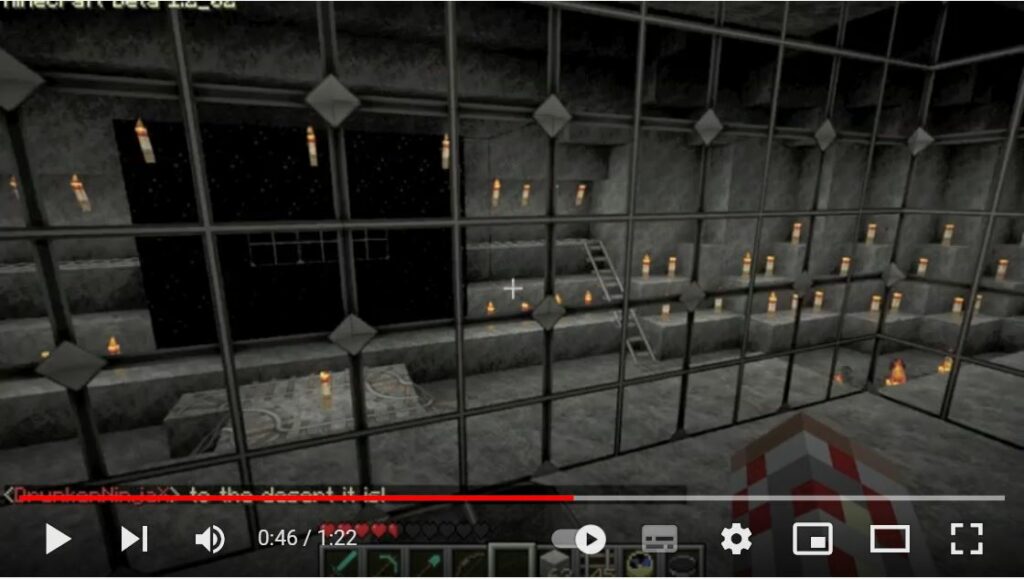In this Reading List, we look at how curiosity in science is political and how it sets standards for science communication. I start with the computer game Minecraft. After finding curiosity, we move on to a few Good Reads that address the connection between curiosity, science, and politics. The Reading list closes with some remarks on the links between explorers’ urge and science communication. Have fun reading!
Motivation unlimited: the large chicken collider
With 235 million copies sold, Minecraft is the most widely distributed computer game in the world. The aim of the game is to combine cube-shaped raw materials and use them to construct buildings or similar structures. The players mine stones and wood, search for oil, fire, and else. They explore a reference system quite similar to the real world. And indeed, Minecraft offers chemistry courses for both, the real world and the Minecraft universe. Study chemistry by combining resources in Minecraft. Why not?
In Minecraft, the day lasts twenty minutes sun always rises in the East. To understand the physics underlying the combination of resources, users created science experiments within Minecraft. Rob Schwarz has compiled five of these in a blog post on Stranger Dimensions. The most significant of all experiments: the large chicken collider. Much like CERN in the real world, the chicken collider intends to reveal what is the smallest possible block size in Minecraft.

Curiosity and the unexpected
What inspires knowledge are the results of the efforts of a thought process. And to communicate the results as well as the underlying curiosity, communication is of particular importance. In Culture, Curiosity, and Communication, Nigel Sanitt explains why communication is the only constant in a science otherwise built on sand. The communication Sanitt refers to is both, stimulating and limiting. Those who poorly communicate research curiosity will face incomprehension and prohibition. Let me expand a little.
On the political dimension of curiosity, Dan M. Kahan et al. demonstrated in a 2017 study published in Political Psychology that information processing driven by scientific curiosity counteracts politically motivated information processing. In other words, people with research curiosity distance themselves from and question political narratives. Their results are not of immediate use to politicians. Furthermore: scientifically curious people appreciate unexpected results. They are less eager about confirming the status quo.
After the successful collision of two chickens in Minecraft’s quantum collider, they vanish: neither the usual raw nor a roasted chicken remain. What remains are feathers only. Did the chickens turn into energy? Was one of the two chickens an anti-chicken in its combination of raw materials? As the results of the experiment spread, the community begins to theorise. The game physics of Minecraft becomes subject to doubt. Would that be possible in an authoritarian Minecraft?
Curiosity in science
It is clear that curiosity has an effect on science. What triggers curiosity and how can we exploit it are not. In the Forbes online edition, Diane Hamilton gives an answer to the first of the two questions: fear, assumptions, environment, and technology trigger curiosity. A Wharton University podcast with astrophysicist Mario Livio reveals: “Curiosity has several kinds or flavors, and they are not driven by the same things.” Curiosity is everywhere and for everything; it only needs inspiration and nurturing.

Supporting or suppressing people’s curiosity is the key to success. However, when talking about curiosity in the context of science communication, this means communicating empathically, writes Elaine Burke. Why, should people be interested in your research? In addition to that, you should focus on relatability. Allow your audience to relate.
Coming to an end I return to Minecraft. Understanding how curiosity works in science, Minecraft remains a mishmash of completed, abandoned, and never-started projects. Ten years ago, the large chicken collider succeeded in reaching people and inspired them to question the Minecraft universe. Regardless of the topic, therein lies the aim, but at least the mission, of good science communication.
The mystery about the smallest possible block size in Minecraft remains unsolved.

